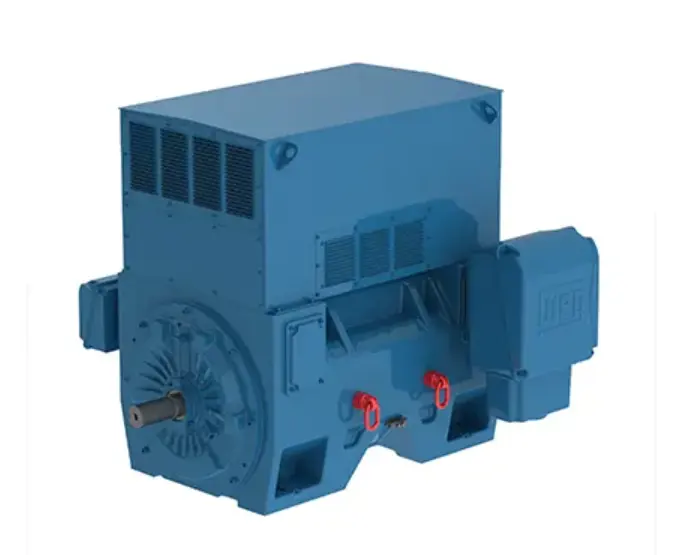
Among the common air compressors, oil-injected screw air compressor ( below referred to the air compressor ) on the lubricating oil quality requirements are very high, however, many users of the monitoring of the lubricating oil testing methods are not perfect, so the appearance of the naked eye observation has become a simple and indispensable means of judgment. When the color of the oil changes, many customers rely only on experience and intuition to make hasty judgments, giving the conclusion that the oil should be changed or continue to use, and their own reasons for the change of color often have a lack of scientific knowledge of the theory. Our company will discuss the causes of color change of Screw Compressor Oilhere.
1. New oil color of air Screw Compressor Oil
The color of the new oil of air compressor oil is mostly light yellow or close to transparent colorless, the color and transparency of the base oil produced in different regions are more or less different, therefore, the color of the same type of oil produced by base oils from different regions may be different, so there is no color requirement for most of the lubricating oils.
Many people tend to think that the closer the oil is to colorless and transparent, the higher the degree of refinement, but the fact is: as long as you use the appropriate additives, almost all lubricants can achieve a colorless and transparent appearance. Therefore, whether colorless and transparent or not cannot be the basis for judging the degree of refinement of the oil. If the indicators meet the requirements, the initial color of the lubricant has no effect on the use of the effect.
In addition, due to differences in packaging, storage and transportation, there are differences in the degree of contact of the oil with air and heat sources, so that many oils take on different shades of color due to the combined effects of partial oxidation and additives before they even begin to be used.
Individual lubricants have special requirements for color, which can be achieved by dyeing, but the performance does not change as a result.
2. Important factors affecting the use of air compressor oil
As the air compressor oil is atomized when sprayed into the air end, and it will be quickly mixed with high temperature compressed gas after sprayed into the air end, it will be oxidized quickly under the action of high temperature and air, and at the same time, there is a large amount of saturated steam to play a catalytic role, therefore, the strength of antioxidant capacity has become a key factor affecting the effectiveness of the use and service life of the air compressor oil.
In order to avoid the catalytic effect of air compressor oil due to the addition of metal elements, we normally add a certain amount of metal passivator, as well as anti-corrosion and anti-rust additives to the air compressor oil, so as to ensure that the air compressor oil in contact with the metal stays stable throughout the whole process.
Air contains a certain amount of gaseous water, when the air is compressed and the contained gaseous water reaches the critical saturation state, the liquid water will precipitate out and mix into the oil to play a catalytic role.
In the use of air compressor oil, many of the above factors are important influencing factors that cause differences in the use and service life of air compressor oil.
3. Color changes during use
With the use of air compressor oil installations, the color of light yellow or nearly colorless and transparent oil gradually becomes darker, and begins to show different color changes: yellow, crimson, blue, purple, dark brown, and even sauce black.
Usually people will think that these common color changes such as yellow, dark brown, etc. are more inclined to be normal, while uncommon color changes such as dark red, blue, purple, etc. are attributed to abnormalities.
Obviously, this lacks the necessary scientific basis to judge whether the oil color change is normal or not, we should first understand the reason for the color change.
Some of the abnormal discoloration of air compressor oil is often accompanied by other characteristics, such as milky white or gray, opaque, while the viscosity is reduced, indicating that the oil content is too high, emulsification is serious; or becoming black accompanied by a large number of metal abrasive debris, giving out the smell of burnt, etc..
4. Causes of common color changes
Although the mixing of various types of impurities will inevitably bring about a certain color change, the main cause of color change is the role of antioxidants. Thermal oxidation is a series of free radical chain reactions. The role of antioxidants is to eliminate the free radicals that have just been generated, preventing the chain reaction.
Antioxidants can delay or inhibit the oxidation process of the oil, thus preventing the aging of the oil and extend its service life, is an essential lubricant additives, antioxidants of the type of choice and the effect of the use of the product often determines the final performance.
Commonly used antioxidants in lubricating oils are amines and phenols. Different types of antioxidants will have different color changes when they are working, and most of the color changes of oils are brought about by the color changes of antioxidants. In the use of antioxidants, in addition to considering the effect of antioxidants, we must also consider the co-compatibility with other additives, in fact, in the study of the formulation, up to hundreds of additives reflects not just a simple superposition of the role of a single agent, but a very complex interaction of the common performance.
Taking ANEDROLGTP46 air compressor oil with excellent performance as an example, while adopting amine antioxidants, it optimizes the ratios of a variety of additives, and in actual use, the change of color is greatly different from that of most of the products on the market, which gradually transforms from colorless and transparent to bright blue, dark blue, violet, and dark purple with the increase of the use time. The tracking test of the product showed that its indicators were still suitable for continued use after running for 7600h (Table 1).

It can be seen, in the absence of other obvious failure characteristics, the color change of the air compressor oil can be regarded as normal, and the situation of precipitates in the oil and the degree of turbidity of the oil should be more concerned about. In the absence of the necessary means of detection, if the discoloration at the same time did not precipitate, and the oil is clear without turbidity, it can be initially judged as a good use of the results. Of course, the most accurate is the indicator of oil testing.
5. Special causes of color change
There is also a special case of oil discoloration that turns green. After a number of cases of tracking research, we found that when the oil turns green, the acid value is detected to increase and the increase is large, and many times the acid value is detected to reach more than 20mgKOH/g. However, even the more lenient oil change standards will not allow the acid value to reach more than 2mgKOH/g. Obviously, this 10 times of the acid value represents a serious deterioration of the oil. In addition, we have detected excessive levels of copper (sometimes upwards of 3,000 ppm) in elemental testing. This situation is obviously different from other normal discoloration. So, is it the erosion of copper parts caused by the increase of acid value, or is it the catalytic effect of the excessive copper element that leads to the increase of the acid value of the oil?
Through a large number of oil tests, we found that the additive content in the oil is extremely low, far beyond the normal loss. At the same time in the detection of solid impurities mixed in the oil, it was found that although the particle size of the impurities are all very small, under the microscopic they have a multi-microporous structure, that is to say, they have a great specific surface. The composition of these solid impurities is relatively complex, including atmospheric dust, fly ash, cement powder and so on.
The impurity particles mixed in the oil have a strong adsorption capacity. These impurities adsorbed a large number of additive components, especially metal passivators and antioxidants, so that the oil reacts with the copper parts in contact (commonly known as biting copper), a large number of copper ions enter the oil, which plays the role of a catalyst, exacerbating the deterioration of the oil, and at the same time the lack of antioxidants makes the oil rapidly oxidized, resulting in a sharp increase in acid value, at this time, a large number of copper ions dissolved into the oil, the oil appears to be green.
From the above analysis, it can be seen that the turning green of air compressor oil is often associated with pollution, especially in the presence of fly ash, cement powder and other environments.
Another point of view that, in the air compressor equipment installation, it needs to be reliably grounded, if the resistance value of the ground connection is too large or false connection, the equipment is at a higher potential, the slow discharge to the ground may cause the ionization of the oil, at this time, there is also the possibility of the formation of the phenomenon of green oil, but the degree is very light, which is not easy to notice.
6 Conclusion
Screw Compressor Oil in the air compressor operation process bears the cooling, sealing and lubrication and other important functions, at the same time plays a role in vibration damping, noise reduction, rust prevention and part of the power transmission, known as the blood of the air compressor. This paper mainly describes the principle of color change of oil-injected screw air compressor oil in the process of use and the resulting impact, and explores the feasibility of oil change with reference to the color change of oil.








